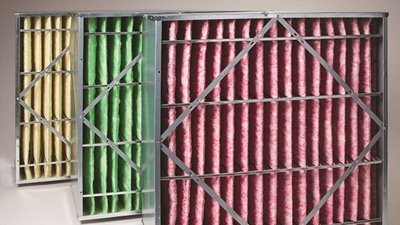 A recent blog post by Johns Manville examines how for many years there has been a trend toward higher performance filter systems that are also more energy efficient. When COVID-19 surfaced, it accelerated this trend and gave global visibility to the importance of improved indoor air quality in both residential and commercial applications.
A recent blog post by Johns Manville examines how for many years there has been a trend toward higher performance filter systems that are also more energy efficient. When COVID-19 surfaced, it accelerated this trend and gave global visibility to the importance of improved indoor air quality in both residential and commercial applications.
In North America, filters are rated by MERV – Minimum Efficiency Reporting Value, with higher numbers indicating better performance in removing particulates/contaminants (an analogous system exists in Europe under ISO standards). A typical residential filter resides in the MERV 8 performance range, while most hospitals utilize filters in the MERV 14 or higher range – oftentimes, using multiple filters in sequence to achieve the high level of filtration required for hospital applications.
With the onset of COVID-19, these higher rated filters have become an area of focus for many building and HVAC system designers who are looking for solutions that could potentially help slow or stop the spread of the virus between rooms. While historically, these types of filters have been required only in hospitals, we are now seeing emphasis on high filtration media for commercial buildings, homes, and schools as a potential stop gap to help protect building occupants.
Read the entire blog post by JM to go more in-depth on this very important subject.
